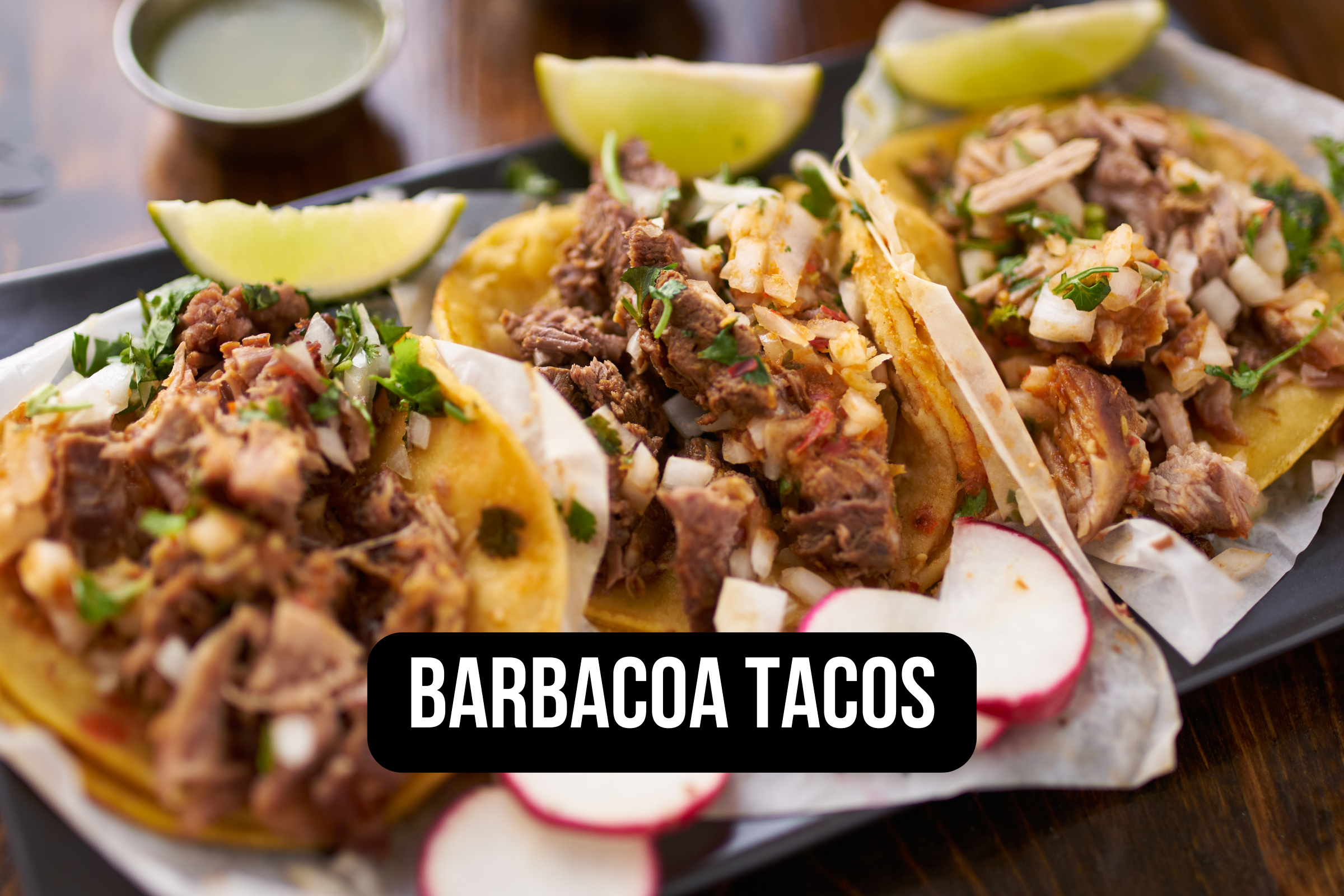The origin and recipe for Drunken Noodle Bowls
Introduction
Welcome, dear readers, to a gastronomic journey that will transport your taste buds to the vibrant streets of Thailand. Today, we delve into the delectable world of Drunken Noodle Bowls, a beloved Thai dish that combines bold flavors and enticing textures. Prepare yourself for an exploration of the origins and recipes behind this culinary masterpiece.
Brief Overview of Drunken Noodle Bowls as a Popular Thai Dish
If you've ever savored Thai cuisine, chances are you have encountered the mouthwatering delight known as Drunken Noodle Bowls, or 'Pad Kee Mao' in Thai. These luscious bowls represent an iconic creation from Thailand's bustling street food scene.
Their popularity extends beyond borders as food enthusiasts worldwide seek out their intoxicating blend of flavors. Imagine a harmonious medley of wide rice noodles soaked in a rich savory sauce infused with exotic spices and aromatic herbs.
Tender pieces of succulent protein dancing amidst vibrant veggies create a visual feast for the eyes. The satisfying crunchiness alongside bursts of umami and spice makes every bite an unforgettable experience.
Teaser about the Origin and Recipe of Drunken Noodle Bowls
The history behind Drunken Noodle Bowls is as intriguing as their tantalizing taste. While there are numerous tales surrounding their origin, one popular story suggests that these noodles owe their name to their ability to cure hangovers – just like a potent alcoholic beverage would!
The intense flavors and fiery heat found in Drunken Noodle Bowls are said to help alleviate symptoms associated with overindulging in alcohol. To uncover the secrets behind this culinary gem, we shall embark on an expedition into Thailand's rich culinary heritage and its diverse influences.
Together, we will unravel the recipe for creating authentic Drunken Noodle Bowls, exploring the carefully selected ingredients and cooking techniques that render this dish so exceptional. Prepare to indulge your senses in a harmonious union of flavors, as we embark on this gustatory adventure into the origins and recipes of Drunken Noodle Bowls.
The Origin of Drunken Noodle Bowls
Historical background of Thai cuisine and its influences
To truly appreciate the origin of Drunken Noodle Bowls, it is essential to understand the rich historical background of Thai cuisine and its influences. Thai food is a harmonious blend of flavors, textures, and aromas that have evolved over centuries.
Influenced by neighboring countries such as China, India, and Malaysia, as well as European traders and explorers who brought new ingredients and cooking techniques to the region, Thai cuisine has developed into a unique culinary tapestry. Thai food is known for its vibrant and bold flavors that embrace a perfect balance between sweet, spicy, sour, salty, and umami.
This balance is achieved through the skillful use of ingredients such as lemongrass, galangal (Thai ginger), kaffir lime leaves, fish sauce (a ubiquitous condiment in Thai cooking), coconut milk, chili peppers, tamarind paste, palm sugar, and an array of fresh herbs. With this foundation in mind, we can now delve into the specific origins of one beloved Thai dish: Drunken Noodle Bowls.
Tracing the origins of Drunken Noodle Bowls to Thailand's street food culture
Drunken Noodle Bowls are an iconic dish that originated in Thailand's bustling street food culture. Street food has always been an integral part of Thai culinary traditions—a vibrant melting pot where flavors collide to create unforgettable gustatory experiences. The accessibility and affordability offered by street vendors have made them beloved among locals seeking quick yet satisfying meals.
Drunken Noodle Bowls made their debut on the streets of Thailand in bustling markets like Bangkok's famous Chinatown or Chiang Mai's night bazaars. These bowls gained popularity due to their tantalizing aroma wafting through the air, drawing in hungry passersby.
The dish's origins can be traced back to the Chinese immigrants who settled in Thailand many years ago. They brought with them their culinary expertise and influenced Thai cuisine, resulting in a delectable fusion of flavors.
The intriguing story behind the name "Drunken Noodles"
The name "Drunken Noodles" may spark curiosity about its origin but has nothing to do with alcohol. One theory suggests that the dish got its name from the notion that consuming these spicy and flavorsome noodles would alleviate the symptoms of a hangover after indulging in a night of drinking. Another belief is that it refers to the carefree abandon with which these noodles are cooked—similar to someone under the influence of alcohol who throws ingredients together without inhibitions.
However, one widely accepted explanation for the name is rooted in Thai culture and language. In Thai cuisine, there is strong emphasis on bold flavors, particularly spiciness.
The term "drunken" (pad kee mao) actually translates to "drunkard," indicating an intense heat that can make you feel intoxicated or sweat like you've imbibed an alcoholic beverage. Thus, Drunken Noodle Bowls aptly describe this fiery and addictive dish that leaves diners craving more.
The origins of Drunken Noodle Bowls lie within Thailand's captivating street food culture, where historical influences from neighboring countries shaped its culinary heritage. The unique blend of spices and flavors found in Thai cuisine sets it apart from other Asian cuisines and makes Drunken Noodle Bowls a beloved dish worldwide.
Understanding the Ingredients
Rice noodles: Different types, thickness, and texture variations
When it comes to Drunken Noodle Bowls, the choice of rice noodles plays a crucial role in achieving the perfect texture and overall experience of the dish. There are several types of rice noodles available in Thai cuisine, ranging from thin to wide and flat. The most commonly used type for Drunken Noodle Bowls is the medium-width rice noodle, also known as "sen yai" or "pad Thai noodles." These noodles have a delightful chewiness that complements the bold flavors of the dish.
For those who prefer a lighter touch, thin rice vermicelli noodles work well too. They soak up all the sauces and infuse each bite with delicate flavors.
Protein options: Traditional choices like chicken, beef, or shrimp, and modern variations like tofu or seitan for vegetarians/vegans
Traditionally, Drunken Noodle Bowls feature succulent pieces of chicken or beef as their protein base. However, this versatile dish can easily accommodate various dietary preferences. For seafood lovers, shrimp is an excellent option that adds a delightful sweetness to the overall flavor profile.
On the other hand, those following vegetarian or vegan diets can enjoy Drunken Noodle Bowls using alternative proteins such as tofu or seitan. Tofu is perfect for absorbing all the flavorful sauces while providing a satisfyingly soft texture.
Seitan adds a meaty chewiness that emulates traditional protein sources while remaining entirely plant-based. These modern adaptations not only enhance Drunken Noodle Bowls' diversity but also offer delicious options for everyone to enjoy.
Fresh vegetables: Commonly used veggies like bell peppers, onions, broccoli, and Thai basil for added flavor
The inclusion of fresh vegetables in Drunken Noodle Bowls not only adds vibrant colors to the dish but also provides a delightful crunch and a burst of flavors. Commonly used vegetables include bell peppers, onions, broccoli, and Thai basil. Bell peppers contribute a slight sweetness and crispness, while onions lend their savory aroma when sautéed alongside other ingredients.
Broccoli adds a satisfying earthiness and a pleasing bite. The star herb in Drunken Noodle Bowls is undoubtedly Thai basil, which infuses the dish with its unique aroma reminiscent of anise or licorice.
This herb's bright leaves bring freshness to every mouthful and elevate the overall taste profile. The combination of these vegetables creates a harmonious balance between textures and tastes, making Drunken Noodle Bowls an exciting culinary delight that encompasses both visual appeal and delectable flavors.
The Signature Sauce
Crafting a Harmonious Symphony of Flavors
At the heart of every memorable Drunken Noodle Bowl lies the exquisite signature sauce that brings together all the elements in perfect harmony. This delectable concoction is primarily composed of key ingredients that enhance each other, resulting in a tantalizing balance of sweet and savory notes.
1. Key Ingredients: A Symphony of Flavors
Unveiling the Secrets to Culinary Excellence
The foundation of the signature sauce revolves around several essential components, each playing a crucial role in elevating the overall taste profile. Soy sauce, known for its robust umami flavor, forms the backbone of the sauce, infusing it with depth and richness. Oyster sauce contributes its unique briny sweetness, while fish sauce imparts an unmistakable savory essence that is quintessentially Thai.
The secret ingredient that adds a fiery kick to this medley is garlic chili paste, commonly referred to as sambal. It introduces an intense heat and complexity to the dish, igniting taste buds with its fiery allure.
To achieve a harmonious balance between sweet and tangy flavors, a delicate touch of brown sugar or vinegar is added. These contrasting elements work synergistically, creating an irresistible symphony on your palate.
2. Balancing Flavors: A Dance of Sweetness and Umami
The Artistry Behind Culinary Balance
The secret to achieving culinary excellence lies in finding that delicate equilibrium between contrasting flavors - sweetness and umami being no exception. The Drunken Noodle Bowl's signature sauce deftly balances the natural sweetness derived from sugar or vinegar with the umami richness originating from soy sauce, oyster sauce, and fish sauce. As you take your first bite, the subtle sweetness dances on your taste buds, awakening them to a myriad of flavors.
It interplays with the savory umami undertones that coat each ingredient. This meticulous balancing act is what sets Drunken Noodle Bowls apart, creating a symphony of flavors that leaves you longing for more.
3. Customizing Spice Levels: Unleashing Your Inner Culinary Adventurer
Embrace Freedom in Heat Selection
The beauty of Drunken Noodle Bowls lies in their versatility and adaptability to individual preferences. The spice levels can be fully customized to suit your taste buds' predilections for heat. If you crave an intense fiery experience, simply increase the quantity of garlic chili paste or add fresh chilies during preparation.
Conversely, if you prefer a more mellow spice profile, exercise restraint when adding these ingredients. Thai cuisine is known for its ability to cater to various palates without compromising on flavor complexity - making Drunken Noodle Bowls an ideal dish for culinary adventurers seeking personalization.
Cooking Techniques
Preparing the rice noodles: Soaking in warm water until pliable but not mushy
One of the crucial steps in creating the perfect Drunken Noodle Bowl is preparing the rice noodles. These noodles, made from rice flour, require special attention to achieve their ideal texture.
To begin, place the desired amount of dry rice noodles in a bowl and cover them with warm water. It's important to use warm water rather than boiling water to prevent overcooking or making them too soft.
Let the noodles soak for about 5-10 minutes or until they become pliable but still have a slight firmness. Once they reach the desired consistency, drain the water and rinse them under cold running water.
This helps remove any excess starch and stops further cooking. The properly soaked and rinsed rice noodles are now ready to be stir-fried to perfection!
Searing proteins: Achieving a caramelized crust while keeping them tender inside
The proteins used in Drunken Noodle Bowls play a significant role in adding depth of flavor and satisfying texture to this dish. Whether you choose chicken, beef, shrimp, or even tofu as your protein source, achieving a caramelized crust while maintaining tenderness inside is key. To sear proteins perfectly for your Drunken Noodle Bowl, start by heating oil (such as vegetable or sesame oil) in a wok or large skillet over medium-high heat.
Once hot enough that it shimmers slightly, add your chosen protein (sliced thinly if necessary) into the pan without crowding it too much so that each piece has enough contact with the surface. Allow it to cook undisturbed for a couple of minutes until you notice a golden-brown crust forming on one side before carefully flipping each piece using tongs or chopsticks.
This process ensures that both sides of the protein get evenly seared, creating a beautiful caramelization that adds depth and flavor to the final dish. Remember to avoid overcooking to preserve the tenderness inside.
Stir-frying vegetables: Maintaining their crunchiness while infusing flavors from the sauce
Vegetables in Drunken Noodle Bowls not only add vibrant colors but also provide essential nutrients and texture. Stir-frying plays a crucial role in maintaining the desired crunchiness of vegetables while allowing them to absorb flavors from the delectable sauce. Begin by heating oil in a wok or large skillet over medium-high heat.
Once it reaches its smoking point, add your chosen vegetables, such as bell peppers, onions, broccoli florets, or any other favorites you prefer. Stir-fry them quickly using a spatula or wooden spoon while constantly tossing to prevent sticking and ensure even cooking.
It is important not to overcook the vegetables; they should retain their crispness and vibrant colors. As they cook, their flavors meld with the sauce, creating a harmonious blend of savory goodness that will pair perfectly with the noodles and proteins.
Through proper soaking of rice noodles for ideal tenderness, searing proteins for that delightful caramelized crust while keeping them tender inside, and stir-frying vegetables to maintain crunchiness infused with flavorful sauces - each cooking technique contributes to achieving an authentic and exceptional Drunken Noodle Bowl experience. Mastering these techniques will elevate your culinary skills and allow you to savor this beloved Thai dish at its finest.
Variations and Regional Adaptations
Vegetarian/Vegan options:
Drunken Noodle Bowls have become increasingly popular among vegetarians and vegans due to their flavorful and versatile nature. To cater to these dietary preferences, many restaurants and home cooks have developed creative adaptations of the traditional recipe.
One common substitution for animal protein is tofu, which absorbs the aromatic sauce beautifully and adds a delicate texture to the dish. Another option is seitan, a high-protein meat substitute made from wheat gluten that mimics the texture of meat.
Additionally, some choose to incorporate a medley of vegetables like mushrooms, carrots, snap peas, or baby corn for added variety and nutrition. These vegetarian/vegan options provide a delightful twist on the classic dish while still capturing its essence.
Conclusion
Drunken Noodle Bowls are an exquisite culinary creation that offers an explosion of flavors in every bite. From their humble origins in Thailand's street food culture to their widespread popularity across different regions, these bowls have captivated food enthusiasts around the world.
Whether you prefer traditional versions with succulent meats or opt for vegetarian/vegan adaptations bursting with freshness and plant-based goodness, Drunken Noodle Bowls never fail to deliver an unforgettable dining experience. Embracing this dish allows us to appreciate not only its rich history but also the beauty of cross-cultural culinary exchange.
As we savor each mouthful of Drunken Noodles - with its harmonious blend of sweet and savory notes - let it remind us that even in our diverse world, we can find common ground through shared appreciation for delicious food. So next time you crave a taste adventure or want to impress your guests with an extraordinary meal, remember Drunken Noodle Bowls are waiting to whisk you away on a gastronomic journey filled with joyous flavors and cultural connections.



































